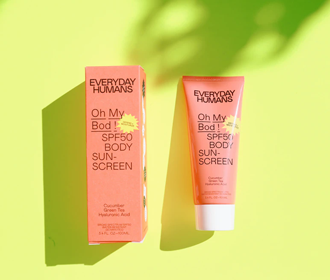Sunscreen Tips!
- Details
- Category: 99+1 Days of Summer
- Published: Saturday, 05 June 2021 03:00
 Don't forget your SPF this summer!
Don't forget your SPF this summer!
We all know how important sunscreen is in protecting your skin from harsh Ultraviolet Radiation (UV). But - with all the different products and brands that are out there, how can you know you are choosing the right sunscreen to receive maximum protection for your skin?
- Get UVA and UVB protection
Always opt for a sunscreen that provides both UVA and UVB protection. This way, you’ll protect your skin from ultraviolet-B (UVB) rays, which cause sunburns and skin damage, as well as ultraviolet-A (UVA) rays that increase your risk for skin cancer.
Also make sure the sunscreen you choose contains zinc oxide or titanium dioxide. These ingredients help to block both UVA and UVB rays. - Choose SPF 30 or higher
Always use a sunscreen with SPF (Sun Protection Factor) 30 or higher. The SPF in your sunscreen absorbs and reflects the sun’s rays so they don’t burn or damage your skin. Keep in mind, though, that higher isn’t that much better when it comes to SPF numbers. “Many people think they can safely stay in the sun longer if they choose a higher SPF,” Chon says. “But that isn’t the case.” Here’s why: SPF protection doesn’t increase proportionately with the designated SPF number. So while SPF 30 absorbs 97% of the sun’s burning rays, SPF 50 absorbs just slightly more — 98%. “If you choose an SPF higher than 30, you should still treat it as though you’re using SPF 30,” Chon says. “That means you should apply just as much sunscreen — and just as often — as you would if you were using SPF 30.” Most people don’t apply enough sunscreen. For sunscreen to do its job effectively, you should apply 1 ounce of sunscreen — the size of a golf ball — to every part of your body exposed to the sun. Susan Y. Chon, M.D. - Apply sunscreen early — and liberally
Your skin can take up to a half-hour to absorb sunscreen. So, plan ahead and apply sunscreen 30 minutes before going outside. And, don’t skimp on the sunscreen. “Most people don’t apply enough sunscreen,” Chon says. “For sunscreen to do its job effectively, you should apply 1 ounce of sunscreen — the size of a golf ball — to every part of your body exposed to the sun.” That includes your ears, feet and back of the neck. - Reapply sunscreen every two hours
Forget all-day protection. Sunscreen wears off after just a couple of hours. So, make sure you lather on another golf ball-sized amount every two hours. In some cases, you should reapply sunscreen every 60 to 90 minutes. Do this if you’re: Using a spray sunscreen. It needs to be reapplied more often because it washes off more easily. Swimming or sweating. Water, snow and sand can intensify the sun’s rays and cause a greater burn. - Don’t rely on sunscreen alone
Unfortunately, sunscreen can’t completely prevent sunburns, blisters and skin cancer. But you can give your skin some added protection by wearing:
- lip balm with SPF 30 or higher
- a tightly woven hat with a wide brim
- wrap-around sunglasses with UV protection
- a tightly woven, dark long-sleeved shirt or special sun-protective clothing
You also can protect your skin by seeking shade from the sun from 10 a.m. to 4 p.m. That’s when the sun’s harmful UV rays are strongest. “Remember, no sunscreen provides 100% protection from the sun,” Chon says. “But by taking these added precautions and taking the time to apply — and reapply — sunscreen properly, you can greatly curb your chances for sunburns and skin cancer.”
Source: www.mdanderson.org















